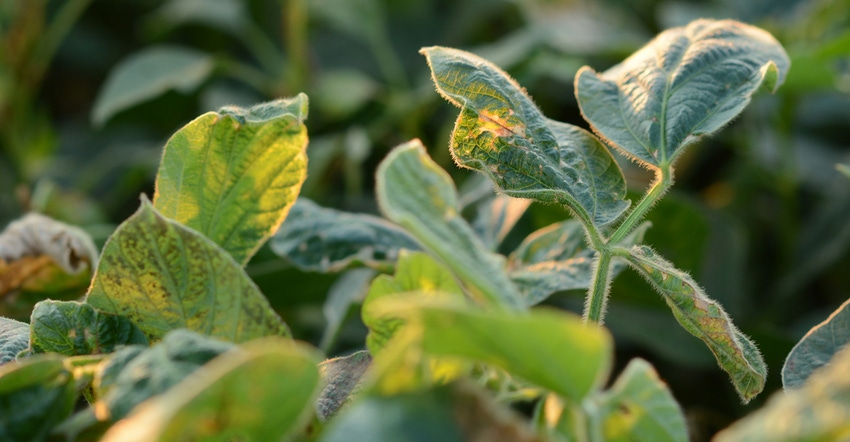
July 15 is the deadline to apply dicamba for Illinois growers who planted soybeans after June 1. The deadline for the few farmers who were able to plant in May already has passed under the state’s requirement that the herbicide not be applied 45 days after planting.
Jean Payne, president of the Illinois Fertilizer and Chemical Association, says those who apply after the deadline passes face steep fines, with the potential for the Illinois Department of Agriculture withdrawing an applicator’s license.
“If you choose to apply dicamba after July 15 on soybeans, they will consider it a knowing and willful act of violating the pesticide act. And that automatically rises to the occasion of a substantial monetary penalty, potentially up to $10,000 per occurrence,” Payne says.
Fines were relatively light last year, as the state received a tumult of 336 drift and misuse complaints for dicamba, with many coming from non-GMO soybean farmers. For the 30 years that dicamba has been applied in Illinois, the number of complaints received each year rarely reached more than a couple of dozen.
Payne says investigations on many of last year’s complaints found the drift that damaged farmers’ crops and natural areas was accidental.
“The Illinois Department of Agriculture ranks your level of negligence and whether you knowingly did something in violation of the act,” she says. “In the history of the Illinois pesticide act, nearly all the time, it’s an accidental violation. When applying after July 15 though, the department will treat it as a knowing and willful violation.”
Payne adds that doctoring records the state requires applicators to keep on the timing of spraying further adds to the state’s judgement that a farmer knew he or she shouldn’t spray after the deadline but did anyway.
“Applicators who do this should be prepared to know they could have their license suspended, which means they cannot legally purchase or apply restricted-use pesticides in the upcoming year,” she says. “That’s any pesticide — so not just dicamba, but insecticides, atrazine, Gramoxone and other products that are classified as restricted use.”
Payne adds IDOA is skilled at tracing the source of a complaint and will be able to find the culprit even if data supplied by the farmer is doctored.
Uncharted waters
Dicamba drift and misuse complaints have always been hard to trace back to the source, because symptoms don’t appear in damaged plants ranging from non-GMO beans to trees until 10 to 20 days after an off-target movement. However, scouting — along with application, wind and temperature records — help IDOA narrow down the source of off-target spraying.
“Most of us figure with the July 15 deadline, it will be the end of July before we really see the symptomology,” Payne says. “If symptomology shows up in August, it indicates an application was made in later July, a violation of the label.”
She says reports from the field show most of the dicamba applications in Illinois have occurred within the first two weeks of July. Last year, most applications were done by June 20, when it was cooler and dicamba was slightly less likely to volatize and drift.
“We are in uncharted territory here,” Payne says.
Retailers can still sell dicamba-based products after July 15. While XtendiMax, Engenia, Fexapan and Tavium are subject to the Illinois dicamba label because they’re made for soybeans, other dicamba formulations meant for pastures and burndowns before cover crops can still be used after the deadline.
About the Author(s)
You May Also Like




